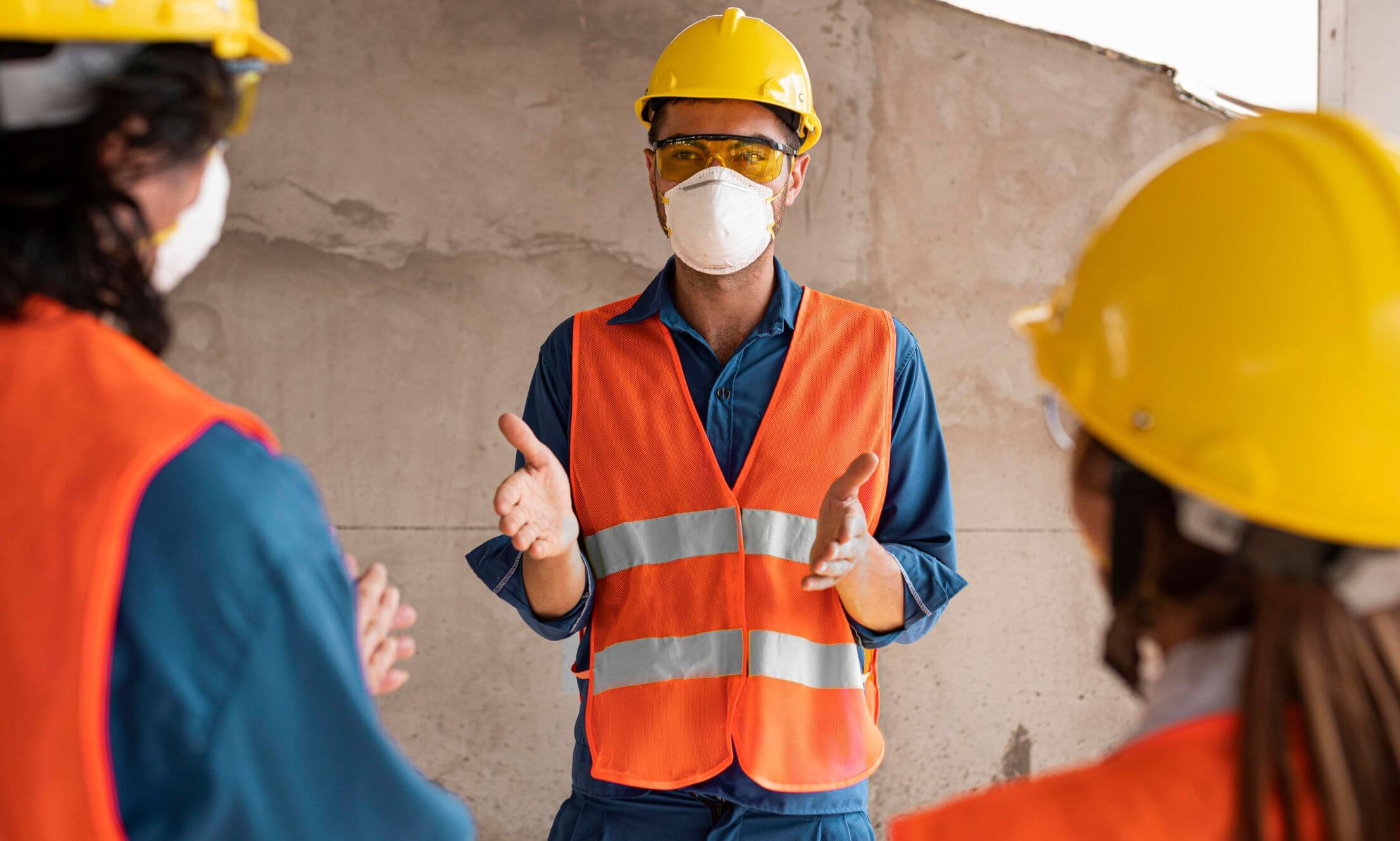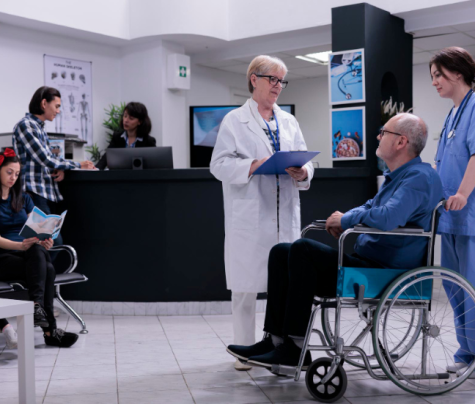
Every building project has challenges. Whether it’s keeping on schedule or staying under budget, teams must stay sharp. But one area can decide how well things go—how safety is handled from the start.
Many job site injuries can be avoided. They happen when risks are ignored, or teams are not fully prepared. Moreover, the most effective teams don’t wait for a warning sign. They take steps early.
Safety is not a backup plan—it’s part of how they work daily. That’s why they avoid delays, control costs, and protect their workers. Moreover, they focus on doing things right from the beginning. That mindset keeps projects moving and people protected.
However, adhering to safety regulations has a bigger legal implication because of the provisions in the Construction Accident Law of New York City.
Workplace negligence due to a lack of safety measures is the basis of establishing liabilities when an accident takes place on a construction site in New York.
Hi, in today’s blog, we will discuss how high-performing construction is a culture we need to follow and the legal provisions associated with it.
High-Performing Construction Safety Isn’t a Department—It’s a Culture

Most job sites have someone with “safety” in their title. But real safety doesn’t come from one person. It comes when everyone sees it as part of their job.
The best teams work this way. They do daily check-ins. They watch for problems before they turn into something worse. Moreover, new workers learn the rules fast because the whole team follows them.
These teams also speak up when something looks wrong, without fear. Leaders take that feedback and act fast. Everyone knows what to do and why it matters.
It’s not about blame. It’s about working better together. Moreover, these teams don’t need reminders. They’re already focused. And that focus builds trust on every level.
Common Mistakes That Undermine Safety
Even strong teams can slip if they don’t stay sharp. One big mistake is using the same plan for every site. Each job is different, and the risks change too.
Some teams stop training after the first few days. Others rely on one person to do everything. These mistakes lead to trouble.
Sometimes, workers are afraid to speak up when they see a risk. That’s another problem. Good safety depends on open talk and quick action.
Teams must review often, fix weak spots, and adjust. Moreover, skipping these steps can lead to injuries, delays, or worse. Avoiding work mistakes takes effort, but it’s worth it.
Mistakes grow when they’re ignored, not when they’re found early.
Common High-Performing Construction Risks
In construction sites, you are prone to encountering different types of risks. So, proper management of construction work areas and maintenance of work equipment is required to ensure safety.
Moreover, the risks can lead to serious harm and injuries to the workers. And, put the company in complicated lawsuits and insurance claims. Some of the common types of risks in construction sites include:
- Falling from unguarded building edges or slippery surfaces.
- Accidents caused by work equipment, due to the lack of proper training or poor maintenance of the machines.
- Being exposed to harmful and toxic substances for prolonged hours on a construction site.
- Abusing certain harmful substances without the proper knowledge of their consequences and health impact.
Prioritizing Safety in High-Risk Construction Sites
To ensure that your company is providing high-performing construction, you will need to mitigate these risks and prioritize workplace safety. Here are some tips for improving performance and prioritizing safety in high-risk construction areas.
- Fostering a Safety Culture: You should ensure that your construction site is safe for all. From maintaining equipment and training workers, you need to look into the ways you can establish a safety culture.
- Effective Training: Untrained workers can cause more harm than trained individuals. So, make sure you provide training and guidance for a high-performing construction team with safety.
- Technology Implementation: Technology is bringing advancement in every industry. So, you can try to implement technologies in your construction site to improve safety.
Legal Implications Of Not Following The High-Performing Construction Safety Measures
The Labor Law of New York primarily governs the construction safety law. The “Scaffold Law” (§ 240 Labor Law) deems the contractor and property owners liable for any accident taking place on a construction site.
Labor Law § 200 and Labor Law § 241(6) are two other provisions in the New York City Labor Law highlighting the importance of safety adherence in a construction site.
Further, with a violation of the safety regulations, a worker can seek Workers’ Compensation and other provisions in the Labor Law of New York City.
Also, the worker can sue the third-party involved, including the contractors and property owners, along with their employer.
However, the Statute of Limitations asks the worker to file a compensation claim within three years of the accident.
The Role of Specialized Safety Partners In Ensuring High-Performing Construction Safety
Not every crew has the time or people to handle safety planning on their own. That’s where expert partners come in. Moreover, they help build clear plans, offer training, and even send trained staff to job sites.
For example, websites like https://menottienterprise.com/ highlight how some companies take on the full responsibility of safety management.
They help free up construction teams to focus on the build itself. Moreover, these providers often support everything from site-specific plans to daily supervision and on-site checks.
This kind of support gives workers what they need to stay safe and helps projects stay on track. Good partners don’t get in the way. Moreover, they let the builders focus on the job while keeping everyone protected.
Practical Habits of Safety-First Teams At High-Performing Construction Sites
Top crews have solid habits. They don’t guess. They follow plans made for each site. These include checklists, meetings, and step-by-step instructions.
Every tool, task, and space is looked at with care. If something changes, the plan gets updated. Moreover, they don’t use the same paper for every job. Teams go through real training often, not just once.
They also keep track of things like near-misses and small problems so they can fix them early. And, safety is not left up to chance. Everyone knows the plan, and everyone follows it.
Moreover, when things change, they adjust fast. That’s what sets these teams apart. These habits are not hard—they just take focus and teamwork.
Measurable Impacts of Prioritizing Safety
When a safe work environment comes first, good things follow. Fewer workers get hurt. Projects finish faster. Costs go down. Insurance rates can even drop.
Moreover, workers stick around longer because they feel safe. That saves money on hiring and training. Clients see that the team is serious, and trust grows. And, fewer delays mean fewer lost days. Everyone wins.
This isn’t guesswork. Companies track these results. Moreover, they know that safer teams do better. The numbers prove it.
Teams that make safety part of their work see real results—not just in reports but in project outcomes. Moreover, these impacts last long after the project ends and help shape future success.
Conclusion
The best crews don’t wait for rules to force action. They lead by example. Safety is how they stay fast, smart, and ready. These teams build better, work smarter, and keep people safe. Every job is a chance to prove it again.
Moreover, they don’t take risks, they take responsibility. That’s the real mark of a high-performing crew. They don’t look for shortcuts. They look for ways to do it right, every single time.










0 Reply
No comments yet.